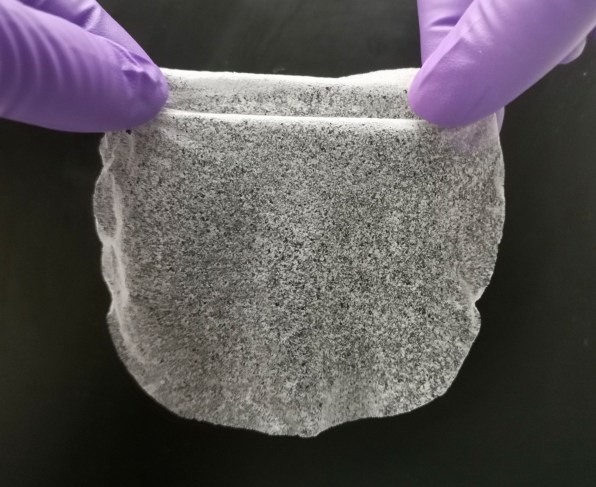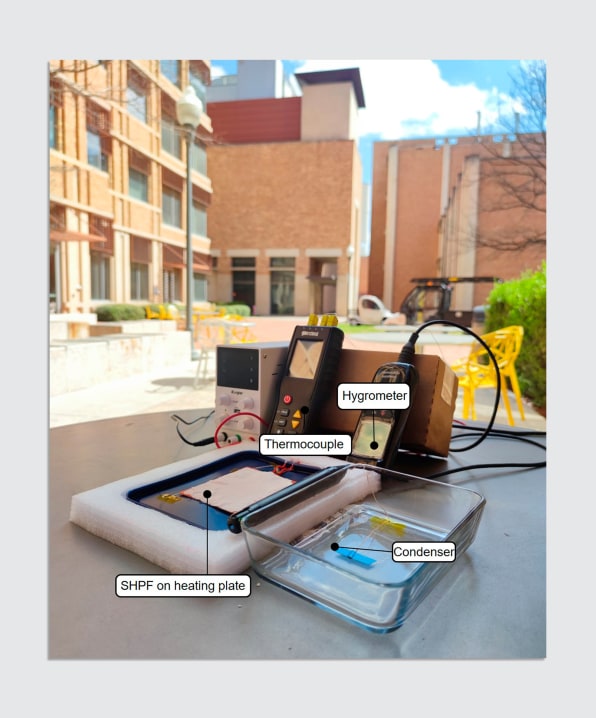- | 12:00 pm
Scientists found a low-cost way to make clean drinking water from air in the desert
The need for clean drinking water is huge: Globally, one in three people don’t have access to it.

In Ethiopia, where an ongoing drought is the worst in 40 years, getting drinking water for the day can involve walking for eight hours. Some wells are drying up. As climate change progresses, water scarcity keeps getting worse. But new technology in development at the University of Texas at Austin could help: Using simple, low-cost materials, it harvests water from the air, even in the driest climates.
“The advantage of taking water moisture from the air is that it’s not limited geographically,” says Youhong “Nancy” Guo, lead author of a new study in Nature Communications that describes the technology.

[Image: The University of Texas at Austin/Cockrell School of Engineering]
Taking water from the air, or “atmospheric water harvesting,” isn’t new. But in arid environments, it’s difficult to capture much moisture, and it’s also energy intensive. The researchers changed the process by using different materials. One component is konjac gum, a powder made from an Asian root vegetable that’s sometimes used as a dietary supplement to add fiber. The open pores in the material help expose it to air, and when it’s combined with a type of salt, it naturally absorbs moisture. (It’s the same basic process that makes salt or sugar clump up if it’s left open and exposed to air.) The scientists added the ingredients to a plant-based polymer that’s designed to quickly capture water and then release it when it’s heated.

[Image: The University of Texas at Austin/Cockrell School of Engineering]
“It’s the salt that actually wants the water, but the whole polymer ‘mattress’ is helping it perform better,” says Guo. “If you just use the salt, it’s going to take 10 hours to absorb and release the water—it’s really slow. But if we’re using our polymer films, absorbing only takes an hour, and [releasing the water] only takes 10 minutes. We speed up the kinetics, so more cycles can be done each day.” The prototype the researchers made can produce more than six liters of clean drinking water per day in very dry climates—places with less than 15% relative humidity—and 13 liters a day in areas with up to 30% relative humidity, enough for a small family. (The U.S. Department of Defense’s Advanced Research Projects Agency, which funded the work, is interested in using it to make water for soldiers in deserts.)
As the material is optimized, it could produce more water. It could also potentially be scaled up for larger applications, like irrigating crops. In areas that have more humidity but contaminated water, it could be used as a source of safe drinking water. The need is huge: Globally, one in three people don’t have access to clean drinking water.


































